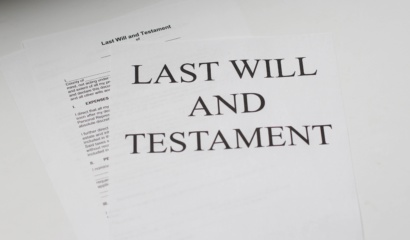Home / Business Legal Lifecycle / Protecting Intellectual Property
Protecting Intellectual Property
Advice on Intellectual Property Protection
Protecting Intellectual Property (Phase 5)
Intellectual Property Protection
Intellectual property protection is critical for businesses, especially for small businesses. As the world becomes more and more digital, intellectual property (IP) protection is becoming even more critical for businesses of all sizes. Small businesses are particularly vulnerable to IP theft, as they often don’t have the resources to protect their IP or enforce their rights if someone does steal it.
‘Intellectual property’ is the legal term given to the assets of a business that have been created by the business owner, their staff or consultants in the course of their employment and includes trademarks, literary and artistic works, designs, inventions, trade secrets, customer lists, processes, procedures, know-how, partnership agreements, business names and images and so on. It is imperative that you put steps in place to properly protect your intellectual property or you could risk irreparable damage to your business. If, further down the track you decide to sell (see section 11) or franchise (see section 7) your business, your intellectual property is the asset that will form the base of any potential sale or franchise.
This phase of the Business Legal Lifecycle is all about identifying, protecting and setting up structures to ensure that third parties cannot steal your intellectual property. While it may seem that intellectual property protection should occur much earlier in the Business Legal Lifecycle, the practical reality is that most start-up businesses do not have the resources to take this step until after they have a viable business and start to leverage their employees. It is for that reason that we have included this phase at this stage of the Business Legal Lifecycle.
How to protect your intellectual property
In this section I will discuss trademarks, establishing a separate entity to own your intellectual property, licensing your intellectual property, how to guides and checklists for the work done in your business, and patents. The Protecting Intellectual Property phase follows straight after the Bringing on Employees phase, and is situated on a downward slope of the Business Legal Lifecycle (see image on page 11). As long as the business owner is a sole operator, their intellectual property is safe. Once they engage employees, the need for intellectual property protection suddenly becomes important. When a business owner first starts out, they will more than likely have all of their ideas and methodology in their head.
This intellectual capital is the most important and valuable asset that the business owns. Once a business brings on employees, the business owner faces the challenge of communicating and explaining their ideas and processes to their employees, usually through documentation and training programs. This information is no longer safe inside the business owner’s head, but is shared with others who may, without adequate protection and safeguards in place, use this information for their own benefit rather than for the business.
Important considerations during Intellectual Property Protection are:
- What is my brand?
- How am I going to protect the brand?
- Is my brand unique enough to protect?
- Will anyone else want to buy my brand?
- How do I protect my intellectual property?
- What other intellectual property do I need to protect?
- If I was to buy my business, what intellectual property would I need to own and what would convince me to pay more for the business?
- If I was to buy my business, what intellectual property would I need to own and what would convince me to pay more for the business?
Dangerous considerations during Intellectual Property Protection are:
- I do not have time to consider protecting my intellectual property
- Nothing will ever happen to my intellectual property anyway so why bother?
- No one will want my brand
- No one can do what I can do, no matter what systems I put in place
Trademarks
What is a trademark?
A trademark is essentially your unique name, logo or symbol that the outside world uses to recognise and acknowledge your business or product. Generally speaking, if you have a unique trademark, another person cannot directly or substantially copy that trademark or use it in competition against you.
Here, the term ‘passing off’ applies, as the other business is ‘passing off’ their business as being the same as or somehow related to or affiliated with your business. If a business is passing off by using a trademark that is similar to yours, for example, you may be able to stop them through the courts. You will need to engage the services of a lawyer experienced in these areas to determine what, if any, rights you have in this regard.
Formal registration of Trademarks in Australia
Most countries have laws that allow for the registration of trademarks with a government body and, in Australia, the relevant body is IP Australia. This registration gives formal recognition to the trademark and grants you certain rights and responsibilities in relation to the trademark to replicate in your business. To protect your trademark in Australia, you need to register your trademark in at least one of the 45 categories or classes of goods and/or services. Depending on your business or product, you may need to protect your trademark in multiple classes as a registered trademark only gives you protection rights for the particular class that you are registered in.
A registered trademark will generally grant its owner the exclusive and protected use of the trademark from the date that the application for registration of the trademark was made with the appropriate government body such as IP Australia. There is a specific process that needs to be followed – which may take more than a year — so you will need the advice of a specialised solicitor. Once you have submitted your application with IP Australia, your proposed trademark will be examined to determine whether it is unique enough to be considered for registration. Considerations include other similar trademarks (whether registered or not) and the likelihood of confusion between your mark and a mark belonging to another business.
In Australia, the trademark will either be approved or you will need to make changes to the mark and/or further submissions as to why your trademark should be approved. Once approved, the trademark must then be advertised to see if any third party has any objections to the trademark being granted to you. Once this process is finalised, you are then granted the registered trademark usually for a period of 10 years.
From the Case Files
We encountered a business owner who did not register their trademark until it was too late. The business was a bakery that had been trading with the same name for 25 years. They had built the business to include 20 stores around the northern suburbs of Brisbane to the Sunshine Coast and they never had an issue with the use of their name. When the business owner decided that he wanted to start franchising the business (discussed in section 7), we discovered that there were a number of other trademarks already registered that competed with his own trademark, and he was unable to use the name of his store/product in the franchise which he could have contested had his trademark been registered. This meant that the business owner had to change the trademark of their business in order to franchise.
International trademarks
If you want to take your business internationally, you will need to first register your trademark in Australia. Once this is done, you can apply to register your trademark globally using the Madrid System through the World Intellectual Property Organisation (WIPO). There are over 90 member countries of WIPO in which protection will be offered to your trademark so long as it does not conflict with another registered trademark in that country. This can be a costly process, as you need to pay application fees to each country. So you need to be clear as to in which countries you intend to trade before you go through this process.
Your protection starts from when you first apply for registration, therefore the earlier that you apply to register a trademark, the better it will be for your business. You will avoid issues that might arise in the future with competing businesses that may mean that you will need to fight for the registration of your trademark. Worse still, you could build a great, sustainable business that is ready to really leverage, only to find out that you have to change the name of your business and lose the vast majority of the goodwill that you have established over the years of trading.
Separate Entity to Hold your Intellectual Property
In certain businesses you might require your trademark to be held/owned by a separate entity such as a company or trust or a combination of these and which is different and separate from the entity that operates your business. You would do this so that if something goes wrong with the entity running the business, the intellectual property relating to that business is still protected.
In my experience, most business owners, when first setting up their business, do not consider the protection they will need if the business fails and this lack of consideration can end up costing them dearly. Ideally this step should be taken earlier in the Business Legal Lifecycle, preferably during the Start-Up phase. The financial burden to set up separate entities to own different assets can be prohibitive at that stage, so it has been included as part of the Protecting Intellectual Property phase.
You need to be aware that if you need a separate entity to hold your intellectual property and have not done so by this phase, there is little point in doing so down the track as the costs and consequences make it uncommercial. As always, it is crucial that before you take any step in setting up a separate entity you obtain advice from your lawyer, accountant, business mentor and other consultants to consider how to structure it correctly for your business.
From the Case Files
An example where a client undertook this change occurred recently. The client was a business that provided professional services as a consultant for third party businesses in relation to issues with their employees. The business had been built from the ground up and had established significant intellectual property that whilst not worth much at the time would be worth more in the future. In the early phases of their business, the owners thought that the idea of separate structures to own their intellectual property was cost prohibitive. As they built their business and developed significant intellectual property and even a book, the client had put all of that at risk with it being owned by the vehicle that traded their business. Being a professional services business, even with insurance, the entity that owned the intellectual property was open to attack if someone wanted to allege that their advice was wrong or negligent. We were able to change the structure at a minimal cost for the clients as the intellectual property had not yet reached its full potential value. This meant that we were able to protect the client’s intellectual property in a cost effective manner.
Licensing arrangements of a separate entity
Where you set up the separate entity, you also need to consider what arrangements are put in place to license the use of the intellectual property owned by the separate entity to the trading company. Where you have set up a separate entity to hold your intellectual property or have built a strong intellectual property product (and the franchise model is not appropriate for you – see section 7), you should consider what licensing arrangements you need to have in place as without a licence agreement the arrangement might be seen as a sham.
Where a separate entity has been set up for this purpose, it is necessary to have an intellectual property licence agreement between the entity and the business. This is an agreement that covers a variety of different matters, including: payment of licence fees (this can be a great way to distribute profits amongst entities from a tax planning point of view); what happens when the agreement ends (so that if a trading entity fails, the intellectual property is protected); and what happens if there is a dispute with a third party over the intellectual property. If you decide to license third parties to use your intellectual property, you will have to ensure that you have a variety of clauses additional to those mentioned above.
These clauses may include:
- (a) The protection of the intellectual property from misuse by the third party
- (b) Confidentiality in relation to any aspect of the intellectual property
- (c) Ownership over any improvements to the intellectual property generated by the third party
All of these considerations are important but you must ensure that you obtain advice from your lawyer and accountant to ensure that the arrangements that are put in place are correct for your circumstances.
From the Case Files
An example of this type of arrangement comes from a native Australian education company. The company provided educational material to schools and other educational institutions on indigenous Australian culture including teaching methodology and a curriculum on teaching this topic. The client set up one entity to own the intellectual property of the business and another to trade the business. This meant that the intellectual property was protected in the asset holding company and allowed for the payment of royalties from the trading company to the intellectual property holding company. This type of structure is used commonly where you have a high risk business with valuable intellectual property.
More Information On Protecting Intellectual Property
Questions to ask before you progress to the next phase:
Have you taken the appropriate steps to protect your business’ brand?
Have you registered your trademark?
Have you protected all of the intellectual property?
Is your intellectual property now in a position where a third party would want to buy or use it?
Interested In Discovering Your Legal Risks?
FAQs
Have an Enquiry?






